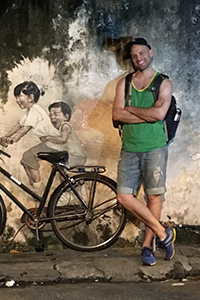 Name: Dominik Zbogar
Name: Dominik Zbogar
Program: Doctor of Philosophy in Rehabilitation Sciences (PhD)
Dissertation: Physical Activity During Inpatient Spinal Cord Injury Rehabilitation
Graduated: May 2016
How would you describe your research project in the UBC Rehabilitation Sciences program?
During my time in the program, I investigated the content of inpatient SCI rehabilitation at two Canadian rehab centres by observing therapy sessions and having individuals wear heart rate monitors. Specifically, we wanted to answer two questions: Was the activity in PT/OT sessions sufficient to create cardiovascular stress which would lead to improved CV fitness? How many movement repetitions of the upper and lower extremities were individuals engaged in?
We found that while individuals reported their activities to be challenging, it was not so from a cardiovascular perspective; the amount of time that clients’ heart rates were in a training zone was several minutes. Upper and lower extremity movement repetitions ranged widely, but did not exceed 100 for most. This is below that found in research where positive training effects were noted, where both animal and human subjects performed several hundred to thousands of repetitions daily.
Where and what is your current position?
I am currently the Research Coordinator for SCIRE Community, an online resource that provides evidence-based information for individuals with spinal cord injury, their families, caregivers, and the community at large. We create articles, videos, and images on a variety of topics, from basics to specific issues, that are relevant to readers shortly after injury and after they are reintegrated into the community.
How do you like to spend your free time?
Outside of work, I enjoy reading and I just finished the Mars trilogy of Kim Stanley Robinson. I recommend it for fans of sci-fi or anyone who would like a task that will take about 6 months to complete. I also enjoy writing, playing, and listening to music, though these days, it’s mostly listening.